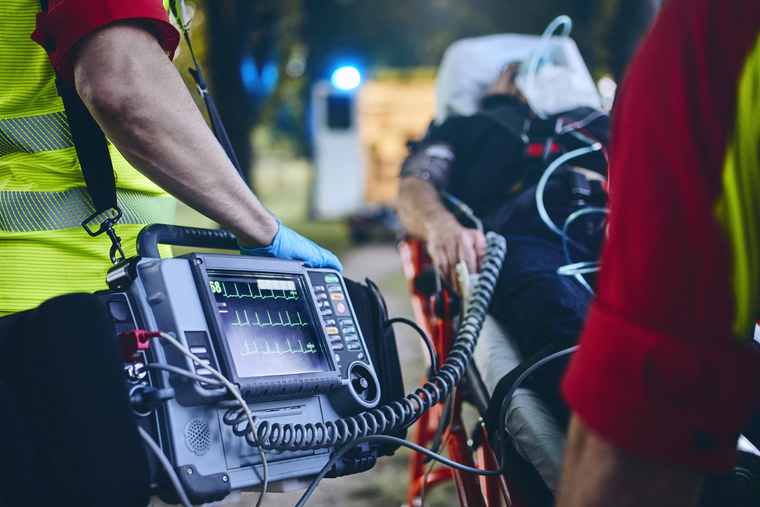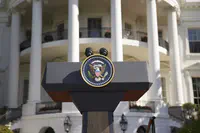Further Consequences of Drug Addiction Emerge
A rising connection between opioid addiction and cardiac arrest has been discovered.

It is no mystery that opioid addiction is harmful to users’ health. And as America’s opioid epidemic advances and claims more lives, researchers are discovering more concerning links between opioid misuse and health crises. It’s important to understand the full extent of opioid-caused health complications and, beyond that, to insist that those who struggle with opioid addiction seek treatment before it is too late.
New Research Shows Opioid Use a Leading Cause of Cardiac Arrests
Research data published in the NIH’s National Library of Medicine found that the rate of opioid-related cardiac arrests rose dramatically in recent years, now on par with the rate of cardiac arrests that occur from other causes or in conjunction with other non-optimum health factors such as drinking, smoking, obesity, etc.1 Opioid addiction is a crisis which affects at least two million Americans and is the leading cause of death for those ages 25 to 64. It must be treated as a public health emergency, lest the death toll continue to rise.2
A recent study indicated that cardiac arrests connected to opioid use soared in recent years, suggesting that people who use opioids may be at higher risk for heart attacks. The researchers conclude in their paper that “Opioid abuse remains a significant cause of cardiac arrest. Despite similar in-hospital mortality and lower resource utilization, severe complications are more frequent in opioid abuse-related cardiac arrests compared to those without opioid abuse.” The conclusion seems clear that people who misuse opioids are at high risk of suffering health complications, including cardiac arrests.
It’s been known for some time that poor health habits contribute to risk for cardiac arrest. Smoking, obesity, poor diet, high cholesterol, and various health conditions increase those risks. What’s alarming about this study’s findings is that the researchers found opioid abuse to be on the same level of risk, if not higher than other risk factors for cardiac arrests. The lead study’s researcher, Ms. Senada S. Malik states, “The rise in opioid-related cardiac arrests during the study period was significant. By 2018, opioids were related to a similar number of cardiac arrests as all other reasons put together. This was an observational study so we cannot conclude causality, but the findings do suggest that the opioid epidemic in the U.S. may have contributed to an increasing number of cardiac arrests.” Even without proof of a direct cause and effect relationship, it is still extremely concerning that opioid-connected cardiac arrests have skyrocketed in recent years.
Why Are Opioids so Dangerous?

While most Americans at this point know that opioids are dangerous, they don’t necessarily know why opioids are dangerous. Opioids act as a depressant on several areas of the user’s body, starting with the opioid receptors in the brain that send pain signals throughout the body, slowing breathing and heart rate. When someone uses too much of the drug, doing so can lead to an overdose, a condition in which breathing and heart rate slow to unconsciousness and even death.
Opioids are used en masse in the health sphere, namely as a pain reliever. But according to the National Institute on Drug Abuse, close to one out of three Americans who are prescribed an opioid pain reliever end up misusing them.3 Furthermore, the vast majority of people who use heroin and illegal synthetic opioids are individuals who started experimenting with drugs by misusing prescription opioids, indicating a need to curb prescribing.
Addiction Statistics – Real Harm from Opioid Misuse
The opioid epidemic is one of the most serious public health crises in the United States today, with emergency department visits spiking yearly at rates as high as 30%. This is a nationwide health problem that’s been steadily spreading since the turn of the century. The United States Department of Health and Human Services reports that about 760,000 people have died from drug overdoses since 1999, with at least two out of three deaths involving an opioid.4 Opioid misuse is becoming more widespread, too, with HHS reporting that about 10.1 million Americans misuse opioids annually, most of them experimenting with prescription opioids.
The Centers for Disease Control and Prevention have labeled opioid addiction as one of the leading causes of death in the U.S. They point to the over 400% increase in overdoses since the turn of the century as the clearest indicator of the problem’s epidemic-level nature.5
Addiction Treatment and Drug Prevention

Opioid addiction can come about from a variety of circumstances. Underlying factors ranging from problems in life that lead to drug use as a coping mechanism, to an individual becoming hooked on his doctor-prescribed pain medication, are all factors that can lead to life-threatening opioid addiction. Thankfully, through education, compassionate health programs, family support, proper utilization of public health institutions, alternative and non-opioid approaches to pain treatment, and many other interventions, much of the opioid addiction that occurs today could be prevented.
Opioid addiction is extremely dangerous. It is a leading cause of preventable death and the source of tens of thousands of deaths in the United States each year. However, opioid addiction is also treatable. People who suffer from opioid addiction must seek help at qualified drug treatment centers, and they must do so as soon as possible.
Treatment enables recovering addicts to regain control of their life. If you know someone hooked on opioids, someone who is using this drug and who cannot stop using it, please make sure they get help as soon as possible. Please don’t wait until it is too late.
Sources:
-
Senada S Malik, Wilbert S Aronow, Alexandros Briasoulis. “Trends and outcomes of opioid-related cardiac arrest in a contemporary US population.” 2021, European Journal of Internal Medicine ↩︎
-
ESC Press Office. “Study highlights steep rise in cardiac arrests associated with opioid use.” 2021, European Soceity of Cardiologists News Release ↩︎
-
NIDA, “Opioid Overdose Crisis.” 2021, NIDA Article ↩︎
-
HHS “Opioid Facts and Statistics.” US Department of Health and Human Services, 2022. HHS.gov ↩︎
-
CDC, “Understanding the Epidemic.” 2021 CDC Publication ↩︎







 ®
®